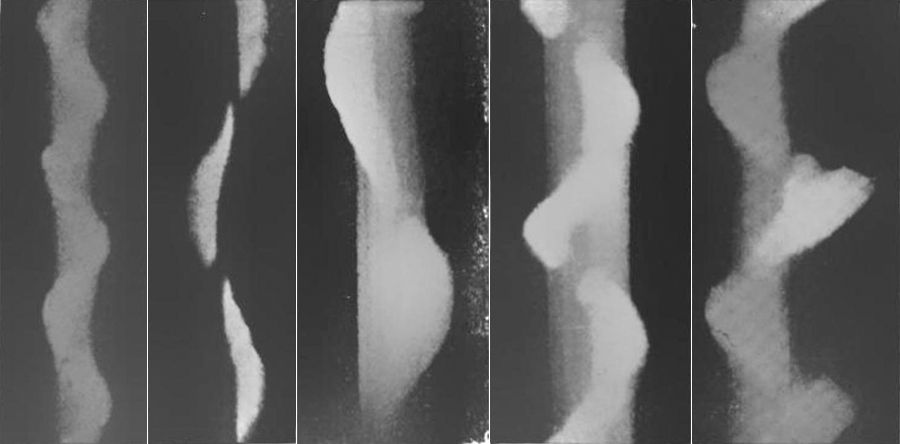is at present rather obscure

from left, Figs. 7a and b, Fig. 9, Fig. 10 and Fig. 11
(squared, re-scaled, composite, sans apology)
ex Edward L(eamington) Nichols (1854-1937 *). “A Photographic Study of the Electric Arc, based upon experiments made by Mr. J. C. McMynn.” AIEE Transactions 8 (1891) : 214-224
Stanford copy, no date of digitization
- Fig. 7. — Alternating arc. [Movement of plate vertical.]
a. Showing oscillations due to earth’s field.
b. Showing oscillations in a stronger field. - Fig. 9. — Alternating arc. [Movement of plate vertical; arc in a strong magnetic field.]
- Fig. 10. — Alternating arc. [Movement of plate vertical; arc in a strong magnetic field.]
- Fig. 11. — Alternating arc. [Movement of plate vertical; arc in a strong magnetic field.]
“The interpretation of many of the features of these plates is at present rather obscure, but it is hoped that experiments now in progress will add something to our present knowledge of the phenomena connected with the alternating electric arc.”
p 221
—
In the discussion, Professor Elihu Thomson wonders if it might be possible to produce an arc with a sine curve wave, either by “a large resistance in the circuit, or by self-induction.” This might yield a “smooth musical note” or, in the case of an “absolute break in the current,” a “set of lashings or snappings in the air...”
encountered here, whilst searching “wandering zero”.
tags:
eros-ian abstractions; induction; obscurity; wandering zero; waves
E. L. Nichols